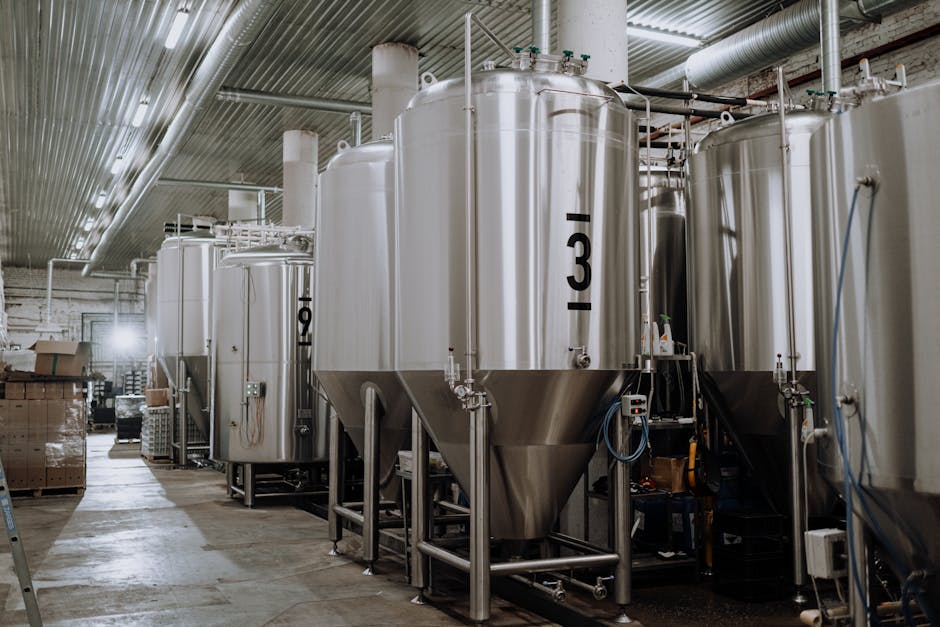
In an era where sustainability and food security are paramount, the future of what we eat is undergoing a profound transformation. At the forefront of this revolution is **Japan**, a nation with a rich heritage in fermentation, now poised to lead the world in a new era of food innovation. Central to this pioneering effort is **Professor Hirofumi Takagi**, a **Distinguished Professor** at the **Nara Institute of Science and Technology (NAIST)**, and his groundbreaking **"Traditional, Biomass, and Precision Fermentation" strategy**.
The Fermentation Renaissance: Beyond Tradition
For centuries, fermentation has been a cornerstone of Japanese cuisine, giving us staples like sake, miso, and soy sauce. These traditional methods, passed down through generations, leverage the power of microorganisms to transform raw ingredients into delicious and nutritious foods. However, **Professor Takagi's** vision extends far beyond these time-honored practices. He's harnessing cutting-edge science to elevate fermentation into a sophisticated, high-tech process capable of addressing global challenges.
His strategy is built on the innovative fusion of advanced **yeast breeding** and state-of-the-art **fermentation technology**. This isn't just about making better sake; it's about precisely engineering microbial processes to create entirely new food sources, optimize nutrient profiles, and produce high-value compounds with unprecedented efficiency and control. This is the essence of "Precision Fermentation" – a highly targeted and data-driven approach to biological manufacturing.
Professor Takagi's Three-Pillar Strategy: A Blueprint for the Future
**Professor Takagi's** **"Traditional, Biomass, and Precision Fermentation" strategy** is a comprehensive framework designed to drive this food revolution:
1. Traditional: Honoring and Enhancing Heritage
The first pillar acknowledges and builds upon **Japan's** deep understanding of fermentation. By applying modern scientific tools to traditional methods, researchers can unlock new potential, improve efficiency, and develop novel applications while preserving cultural significance. This pillar ensures that the innovations are rooted in proven efficacy and cultural relevance.
2. Biomass: Sustainable Sourcing for a Circular Economy
This pillar focuses on utilizing diverse biological resources – or **biomass** – as feedstock for fermentation. This includes everything from agricultural waste and byproducts to underutilized plant materials. By converting these resources into valuable food components or ingredients, the strategy promotes a circular economy, drastically reducing waste and environmental impact. Imagine turning what was once discarded into a sustainable protein source or a functional ingredient that enhances our food.
3. Precision Fermentation: Engineering the Future of Food
This is where the technological innovation truly shines. Through advanced **yeast breeding** and sophisticated process control, **NAIST** researchers can precisely manipulate microorganisms to produce specific proteins, fats, flavors, or nutrients. This level of control allows for the creation of alternative proteins that mimic meat or dairy, the development of functional ingredients that boost health, or even entirely new food structures. It's akin to programming biology to produce exactly what we need, with minimal waste and maximum efficiency.
Societal Impact and User Benefits: A Taste of Tomorrow
The implications of **Professor Takagi's** strategy extend far beyond the laboratory, promising transformative benefits for society and everyday users:
- Enhanced Food Security: By creating new, sustainable protein sources and efficient production methods, this strategy can help feed a growing global population, especially in resource-constrained regions.
- Environmental Sustainability: Reducing reliance on traditional agriculture and animal farming means less land, water, and energy consumption, significantly lowering the carbon footprint of our food system. The valorization of **biomass** further contributes to a cleaner planet.
- Health and Nutrition: Precision fermentation can produce highly nutritious ingredients, including essential amino acids, vitamins, and beneficial compounds, leading to healthier food options tailored to specific dietary needs.
- Novel Culinary Experiences: Imagine new flavors, textures, and ingredients that open up entirely new culinary possibilities for chefs and home cooks alike. This technology can unlock unprecedented creativity in food design.
- Economic Growth: This innovation has the potential to spawn new industries, create jobs, and position **Japan** as a global leader in the high-tech food sector, driving exports of both products and expertise.
By leveraging **Japan's** deep expertise in **fermentation technology** and combining it with cutting-edge science, **Professor Hirofumi Takagi** and **NAIST** are not just developing new food products; they are crafting a comprehensive **food innovation strategy** that promises a more sustainable, resilient, and delicious future for everyone, from **Japan to the world**.
Comments
Post a Comment